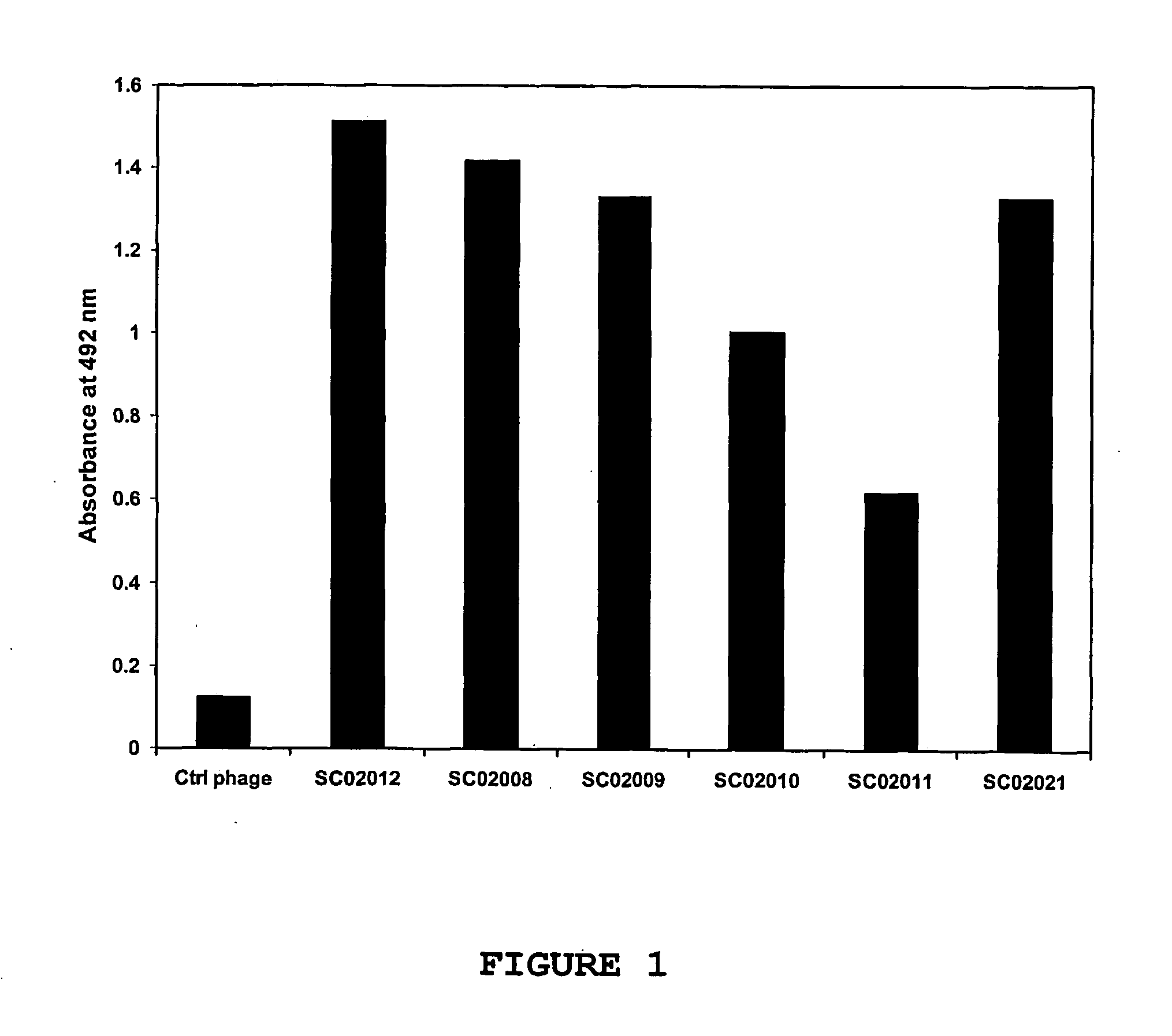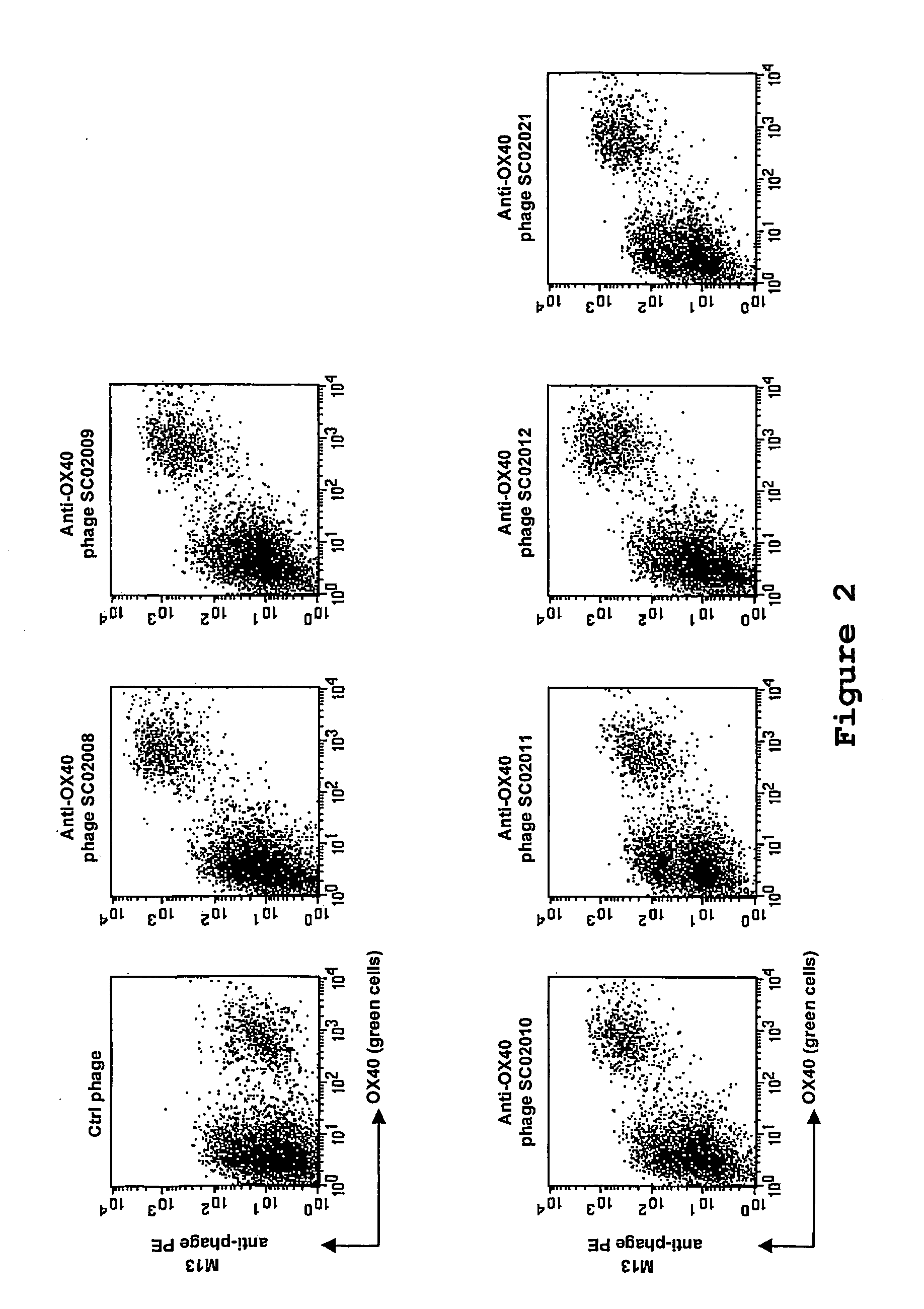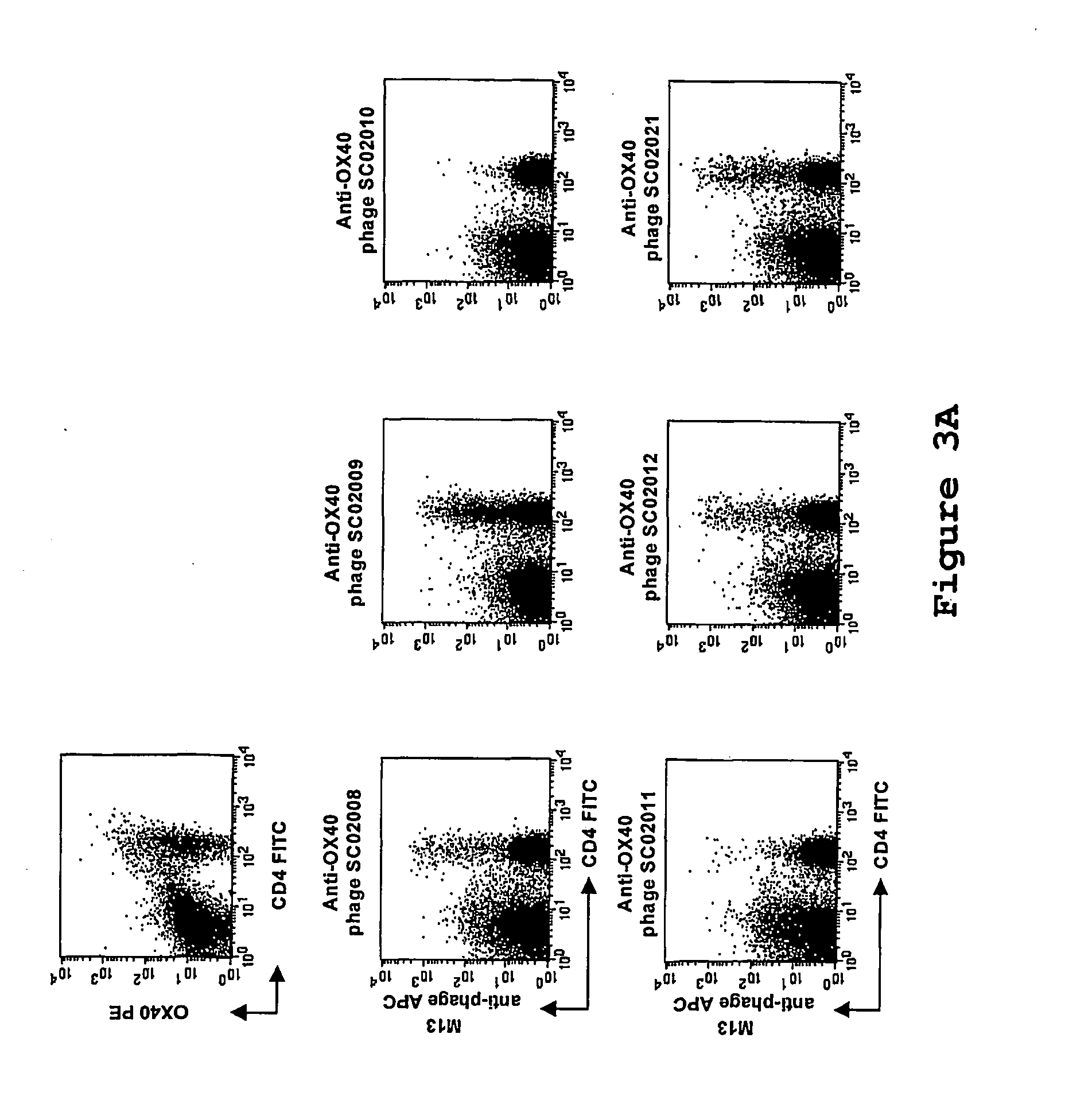Agonistic Binding Molecules to the Human OX40 Receptor
a technology of agonistic binding molecules and receptors, applied in the field of biotechnology, can solve the problems of short serum half life, short circulatory retention time, and limited human use of non-human antibodies in vivo, and achieve the effect of enhancing the immune respons
- Summary
- Abstract
- Description
- Claims
- Application Information
AI Technical Summary
Problems solved by technology
Method used
Image
Examples
example 1
Selection of Phage Carrying Single Chain Fv Fragments Specifically Recognizing Human OX40-Receptor Using OX40-Ig Fusion Protein.
[0116] Antibody fragments were selected using antibody phage display libraries and MAbstract™ technology, essentially as described in U.S. Pat. No. 6,265,150 and in WO 98 / 15833, both of which are incorporated herein in their entirety. All procedures were performed at room temperature unless stated otherwise. A human OX40-Ig fusion protein consisting of the extracellular domain of the human OX40-receptor linked to the CH2 and CH3 domains of human IgG1 was obtained commercially (Alexis Biochemicals) and coated for 2 hours at 37° C. onto the surface of Maxisorp™ plastic tubes (Nunc) at a concentration of 1.25 μg / ml. The tubes were blocked for 1 hour in 2% fat free milk powder dissolved in PBS (MPBS). Simultaneously, 500 μl (approximately 1013 cfu) of a phage display library expressing single chain Fv fragments (scFv's) essentially prepared as described by De...
example 2
Validation of the Human OX40R-Specific scFv's.
[0117] Selected phage antibodies that were obtained in the screen described above, were validated in ELISA for specificity. For this purpose, human OX40-Ig was coated to Maxisorp™ ELISA plates. After coating, the plates were blocked in 2% MPBS. The selected phage antibodies were incubated in an equal volume of 4% MPBS. The plates are emptied, washed once in PBS, after which the blocked phages were added. Incubation was allowed to proceed for 1 hour, the plates were washed in PBS containing 0.1% Tween-20 and bound phages were detected using an anti-M13 antibody conjugated to peroxidase. As a control, the procedure was performed simultaneously using a control phage antibody directed against thyroglobulin (De Kruif et al. 1995a and 1995b), which served as a negative control. As shown in FIG. 1, the selected phage antibodies called SC02008, SC02009, SC02010, SC02011, SC02012 and SC02021 displayed significant binding to the immobilized huma...
example 3
Selection of Phage Carrying Single Chain Fv Fragments Specifically Recognizing Human OX40-Receptor Using OX40+ CD4+ T-Cells.
[0122] Phage selection experiments were performed as described supra, using lymphocytes as target. An aliquot of the phage library (500 μl, approximately 1013 cfu) were blocked with 2 ml RPMI / 10% FCS / 1% NHS for 15 minutes at room temperature. Tonsil MNC (˜10×106 cells) were added to the blocked phage library and incubated for 2.5 hours while slowly rotating at 4° C. Subsequently, the cells were washed twice and were resuspended in 500 μl RPMI / 10% FCS and incubated with a FITC-conjugated anti-CD4 antibody (Becton Dickinson) and a phycoerythrin-conjugated anti-OX40-receptor antibody (Becton Dickinson) for 15 minutes on ice. The cells were washed once and transferred to a 4 ml tube. Cell sorting was performed on a FACSvantage fluorescence-activated cell sorter (Becton Dickinson), and ˜15.000 CD4+ OX40+ cells were sorted. The sorted cells were spun down, the supe...
PUM
| Property | Measurement | Unit |
|---|---|---|
| W/W | aaaaa | aaaaa |
| W/W | aaaaa | aaaaa |
| W/W | aaaaa | aaaaa |
Abstract
Description
Claims
Application Information
 Login to View More
Login to View More - R&D
- Intellectual Property
- Life Sciences
- Materials
- Tech Scout
- Unparalleled Data Quality
- Higher Quality Content
- 60% Fewer Hallucinations
Browse by: Latest US Patents, China's latest patents, Technical Efficacy Thesaurus, Application Domain, Technology Topic, Popular Technical Reports.
© 2025 PatSnap. All rights reserved.Legal|Privacy policy|Modern Slavery Act Transparency Statement|Sitemap|About US| Contact US: help@patsnap.com



